
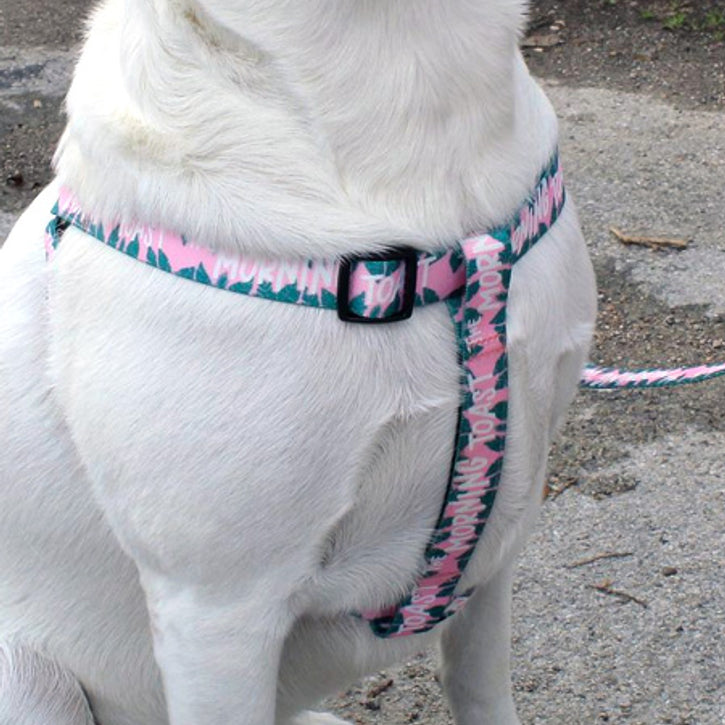
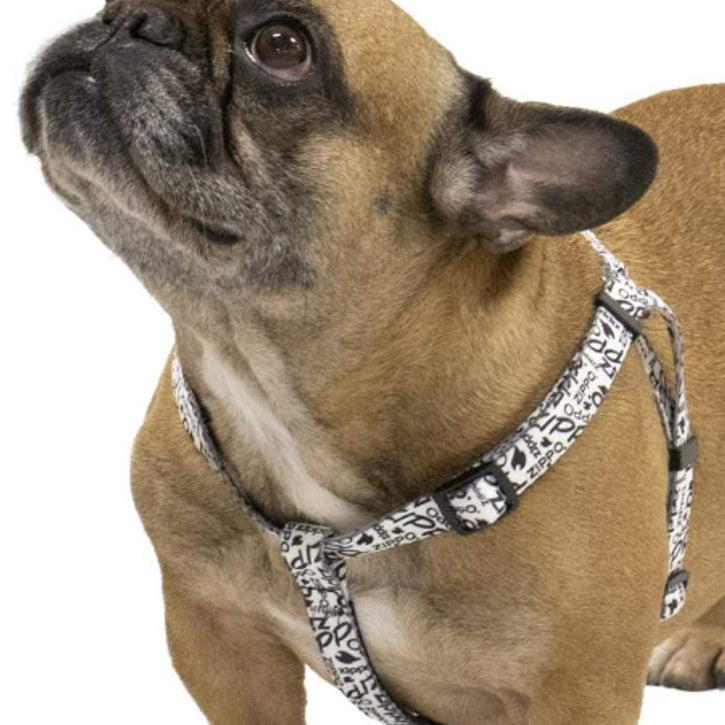
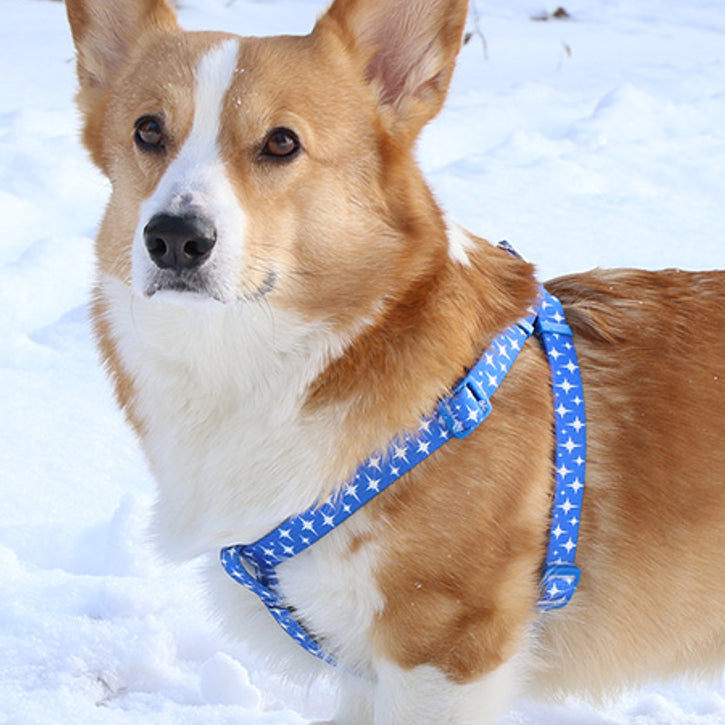
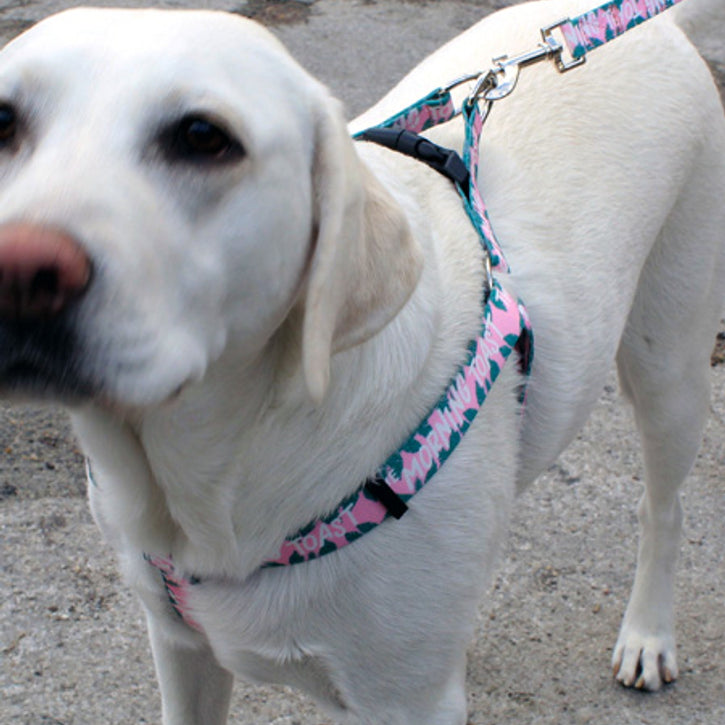
Step In Dog Harnesses For Safer Walks
Step In Dog Harnesses For Safer Walks
- Strong, secure double-locking buckle
- Adjustable for a perfect fit
- Heavy-duty stitching
- Strong metal D-ring
| Small | Medium | Large | |
| Width | Up to 25lbs | Up to 55lbs | Up to 75lbs |
| Girth | 8-23" | 18-29" | 22-39" |
| Thickness | 0.1" | 0.1" | 0.1" |



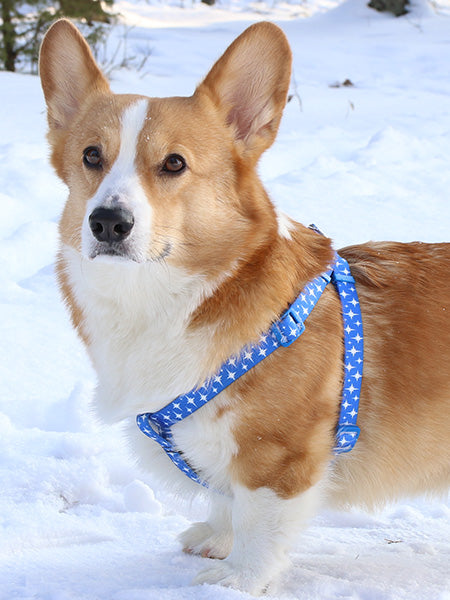
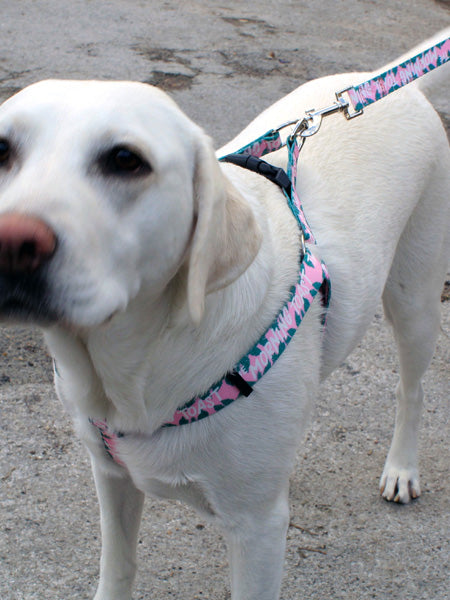
Our expert design team works closely with you to create amazing products that are consistent with all brand standards and guidelines.
-
Step 1
Get free mock-ups. Start Now
-
Step 2
Review & select designs
-
Step 3
Start production
-
Step 4
Let’s get you ‘Pet Ready’
-
Step 5
Engage pet parents
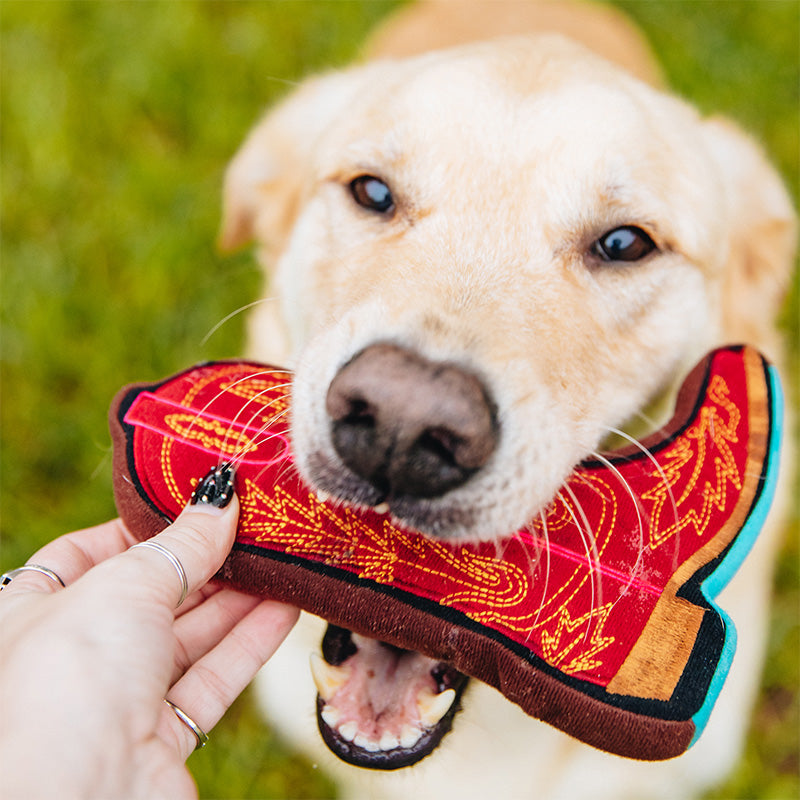
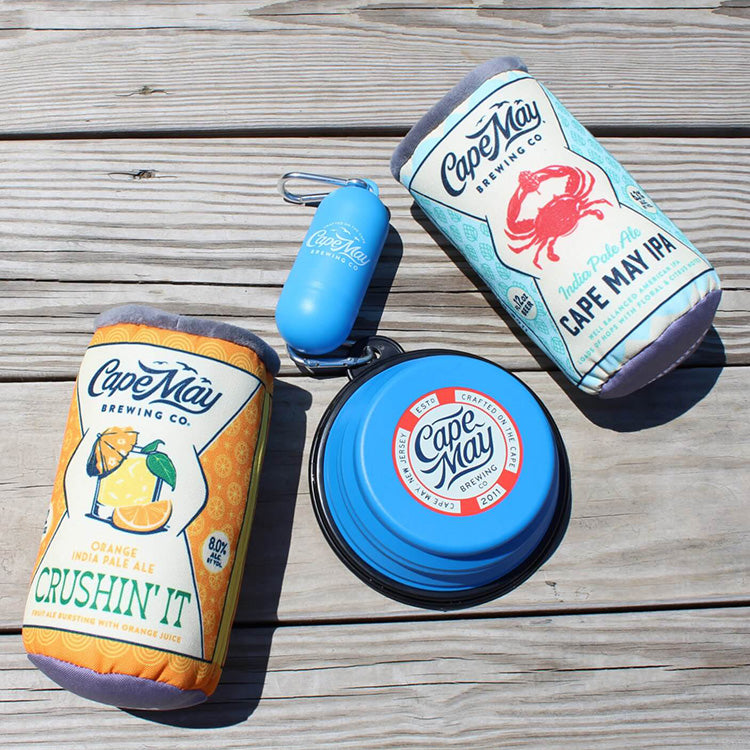
Danny Baker
Lane Boots
Stephanie Frailey
Staples Promotional Products
Step In Dog Harnesses For Safer Walks
STEP-IN HARNESSES
Those raising pets know that walking them is essential for many reasons. In addition to giving the pet a chance to relieve themselves outdoors, the daily stroll helps prevent obesity in dogs, keeps their joints strong, and wards off immobility in their old age. Going on a walk can even provide many mental and emotional benefits for people’s fur babies. Specifically, this deceptively simple task can help curb destructive and attention-seeking behaviors while providing pets with excellent mental stimulation.
When taking dogs out for a walk, though, it’s important to make sure that they’re properly outfitted for the activity. The most common choice for pet parents is the classic leash and collar combo, but there is an alternative to the traditional collar that many people now consider more comfortable and humane.
What Is a Step-in Harness?
The modern-day dog harness was inspired in large part by harnesses used in the equestrian world. In ancient times, people needed draft animals such as horses or oxen to pull heavy carts. They quickly found that hitching the loads to these animals by the neck placed significant pressure on the animal’s respiratory system, thus keeping them from fully exerting themselves.
To improve efficiency and maximize the use of the animal, harnesses that instead attached to the torso were invented, which then allowed them to fully utilize their weight for the task. The design was since adapted for all animals that could be trained to pull loads, including dogs. Since then, different harness styles have been developed so that dogs can take part in specific tasks, such as participating in active combat, carrying medical supplies, and aiding with the rescue of the injured.
Today, dog harnesses have taken on a wider variety of other functions, from supporting the rehabilitation of injured dogs to helping pups learn how to swim. The step-in harness, in particular, is primarily used for walking dogs. It is considered the more humane alternative to the traditional collar, which can choke pets that tend to pull on their leashes. The step-in harness is also recommended for larger and stronger dogs that require more control on the part of the pet parent.
There are two main types of step-in harnesses: the front-clip and the back-clip. As the names suggest, the only difference between the two is the placement of the clip or ring where the leash is meant to be attached. PrideBites’ step-in harnesses are back-clip harnesses, which are considered the more versatile of the two. Keeping the leash out of view from the pet prevents them from gnawing on it or getting their legs tangled in it.
Why Do Some Pet Parents Prefer Using a Step-in Harness over the Traditional Dog Collar?
Some pet parents consider a step-in harness a much more effective pet management and training tool over the traditional collar. Here are a few reasons why:
They’re Safer than Traditional Collars
Step-in harnesses are simply a safer choice over traditional “choke” dog collars. A leash attached to a collar can put undue tension on the pet’s neck, which can be very dangerous, but especially so if the dog is young or of a smaller breed. The pressure that a regular dog collar can exert on the pet’s windpipe can lead to serious medical emergencies, such as a collapsed trachea or tissue damage around the windpipe. Meanwhile, step-in harnesses evenly distribute weight across the dog’s chest and shoulder area, minimizing—if not eliminating—that choking risk.
They’re Better for Managing Strong Pullers or Larger Breeds
If the pet is an especially strong puller or a larger breed, a step-in harness may be a more effective way to control and manage them while out on a walk. Even if the pet darts forward unexpectedly, the design of the harness only distributes the strain across their chest or back. This makes it easier for the pet parent to hold their ground, maintain their balance, and/or pull their pet back.
They’re Great for Discouraging Pulling in General
Step-in harnesses work better when it comes to discouraging the pet from pulling altogether. With a short but firm yank, the pet parent should be able to redirect their fur baby’s attention and stop them from continuing the action.
They Allow Pet Parents to Help Their Pups Get Around
Most step-in harnesses are also designed in such a way that the pet parent can use the back portion as a handle. This allows pet parents to assist their fur babies if they need help getting to their feet, entering a vehicle, or moving over certain barriers.
They’re Harder for Pets to Slip Out of
Similar to a Martingale collar, the step-in harness is nearly impossible to back out of. As long as it is sized and fitted appropriately, even the craftiest of pups can’t pull an escape artist act if they’re wearing a harness.
They’re Easier on Flat-faced Dog Breeds
Flat-faced or brachycephalic dog breeds such as French bulldogs or pugs often run into difficulties when using traditional dog collars, as these tend to put pressure around their necks and hinder their breathing. With a step-in harness, they can be taken on walks without any risk of cutting off their air supply.
They Work Better for Skittish Pups
Step-in harnesses are the ideal choice for dogs who are skittish about other management tools and resist wearing anything that has to go over their head, such as collars or clothing. The harness is designed to be stepped into and then simply fastened, which can help lessen the fear and anxiety that pups may feel.
What Factors Should Your Customers Consider Before Buying a Step-in Harness for Their Pet?
Size
Step-in harnesses should be properly fitted to the pet so as not to restrict their movement. It shouldn’t be too tight, but it also shouldn’t be so loose that it will sag while the pet is wearing it. The most ideal option is the adjustable step-in harness, which should fit still fit pets even if they gain or lose a bit of weight.
PrideBites’ step-in harnesses are available in three adjustable standard sizes for a perfect fit every time: small, medium, and large. The small size can accommodate dogs up to 25 pounds in weight and between 8 to 23 inches in girth. The medium size can fit dogs that weigh up to 55 pounds and are between 18 to 29 inches in size. Finally, the large size should be good for dogs weighing up to 75 pounds and between 22 to 39 inches in size. Should your customer have a fur baby that is between sizes, you can advise them to pick a bigger-sized harness just to be on the safe side.
Durability
As a product designed to restrain and manage a pet, step-in harnesses should hold up to quite a bit of abuse. Nylon is the most popular material for step-in harnesses because it is pet-safe, chew- and gnaw-resistant, and inexpensive. PrideBites’ offerings are made with durable nylon reinforced with heavy-duty stitching for maximum strength and longevity. It also features a strong double-locking buckle to ensure security as well as a metal D-ring that is compatible with any clip-on leash.
Comfort
The entire point of buying a step-in harness is to eliminate unnecessary pressure on the pet’s neck, throat, and windpipe area. Making sure that it is properly fitted should take care of this, but some customers may prefer extra features such as additional padding to make the accessory more comfortable for their pet to wear.
Type
The two main types of step-in harnesses are the front-clip and the back-clip. They may also be known as “front-attaching” and “back-attaching.” Both refer to the placement of the clip or ring where the leash is supposed to be attached.
Front-clip or front-attaching step-in harnesses are usually recommended for larger dog breeds. Trainers also tend to prefer them because dogs are less able to pull on their leashes when wearing them, allowing for better control.
Back-clip or back-attaching step-in harnesses are a better choice for dogs that are already used to wearing harnesses in general. They are also ideal for smaller dog breeds.
PrideBites is the savvy retailer’s top choice for wholesale custom pet products. We’ve worked with hundreds of brands that have wanted to expand their offerings to include items that will entice and delight pet parents all over the world.
Like all of the products we carry, the PrideBites step-in harness can be an excellent addition to your existing inventory. Alternatively, it can be included in your company’s marketing strategy as a giveaway or prize at your next big event. It is available in quantity breaks of 50, 100, 300, and 500 units per size per order. Normal production time takes 4 to 6 weeks after your order has been finalized.
Every order we receive is eligible for a free virtual mock-up, available to you upon request. Our design team is always committed to working closely with yours to create a truly remarkable product that is in line with all of your brand’s guidelines and standards. Get started today by filling out the contact form available on this page, or by reaching out to us through any of the channels listed on our Contact Us page.